Related Tags
The best gear of the decade: 2010-2019
Here are the 10 pieces of guitar gear that represent the most game-changing, innovative and desirable product releases of the last 10 years.
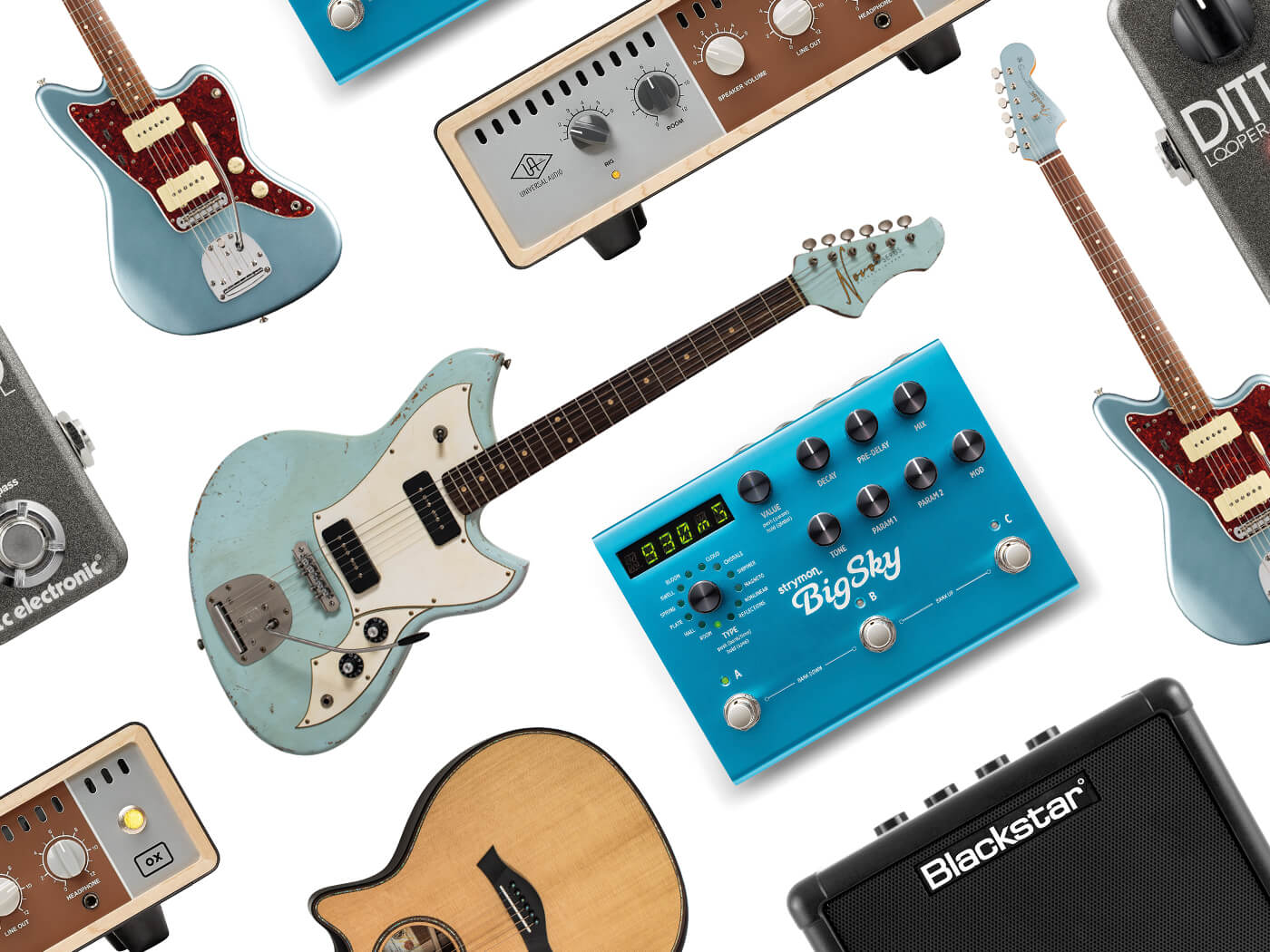
2020. It certainly sounds futuristic, but as we approach the dawn of a new decade, it’s hard not to feel shortchanged by the promises of science-fiction that remain undelivered. It’s probably a good thing everything hasn’t come to fruition – some of the more dystopian futures depicted in sci-fi are unlikely to satisfy anybody’s definition of an appealing holiday destination. But on the other hand, whatever happened to flying cars and teleportation? Ideally without getting genetically spliced with a fly, of course…
All that said, wind the clock back to 1 January 2010 and the world was a very different place. Spotify was in its infancy, Instagram was preparing to launch. YouTube was already serving nearly two billion video views each day but ‘influencer’ culture was still nascent and Apple Music was another five years away. What does all that have to do with guitar gear? Well, loads actually.
Over the last decade, mainstream music consumption has shifted to a streaming model that has torn down tribal and temporal boundaries and put Billie Eilish and Post Malone on the same stage as The Beatles and The Stones. The guitar might not be the fulcrum of pop culture as it was in the 50s and 60s, but it’s been ever-present while a whole new breed of players have emerged for whom social media is the most important concert venue and shop window of all.
While guitar might be their instrument of choice, it’s certainly not indicative of a genre-bias towards rock or metal. And these are the next-generation guitar players that luthiers, pedal builders and amp designers need to consider while they beaver away in R&D departments in all corners of the globe.
Some manufacturers have got close, but it feels like that silver bullet product for contemporary players is still elusive. Imagine one small box that’s an audio interface, HD amp modeller, looper and learning aid, plugs directly into your smartphone and plays nicely with its video capabilities. Arguably, it would be a hell of a lot more relevant for beginners than the tiny transistor combos that still find their way into starter packs – if most kids today would prefer to be a YouTuber than a rock star, let’s give them the tools they need. Maybe, in the process, it’ll do something to address that oft-quoted 90 per cent abandonment rate among new players during their first year of learning.
So here’s to the roaring twenties that lie ahead, and whatever innovations the next 10 years will bring. But first, read on to find out which products we think have been the most important, most innovative and best in class over the past decade…
TC Electronic PolyTune (2010)

Prior to the launch of the PolyTune, the stage-tuner market was dominated by the Boss TU-2. Boss units featured on the pedalboards of pretty much everyone, from pub players to pros, but this affordable polyphonic tuner seemed to knock the TU-2 off its perch almost overnight.
Nowadays, whether in stompbox, mini-stompbox, clip-on or iOS app form, TC’s PolyTune tech is so ubiquitous it’s hard to imagine life without it. There are players with more sophisticated tuning requirements than it can handle, but for most of us, PolyTune ticks all the boxes. Version three includes polyphonic, chromatic and strobe modes and switchable true/buffered bypass.
Kemper Profiling Amp (2011)
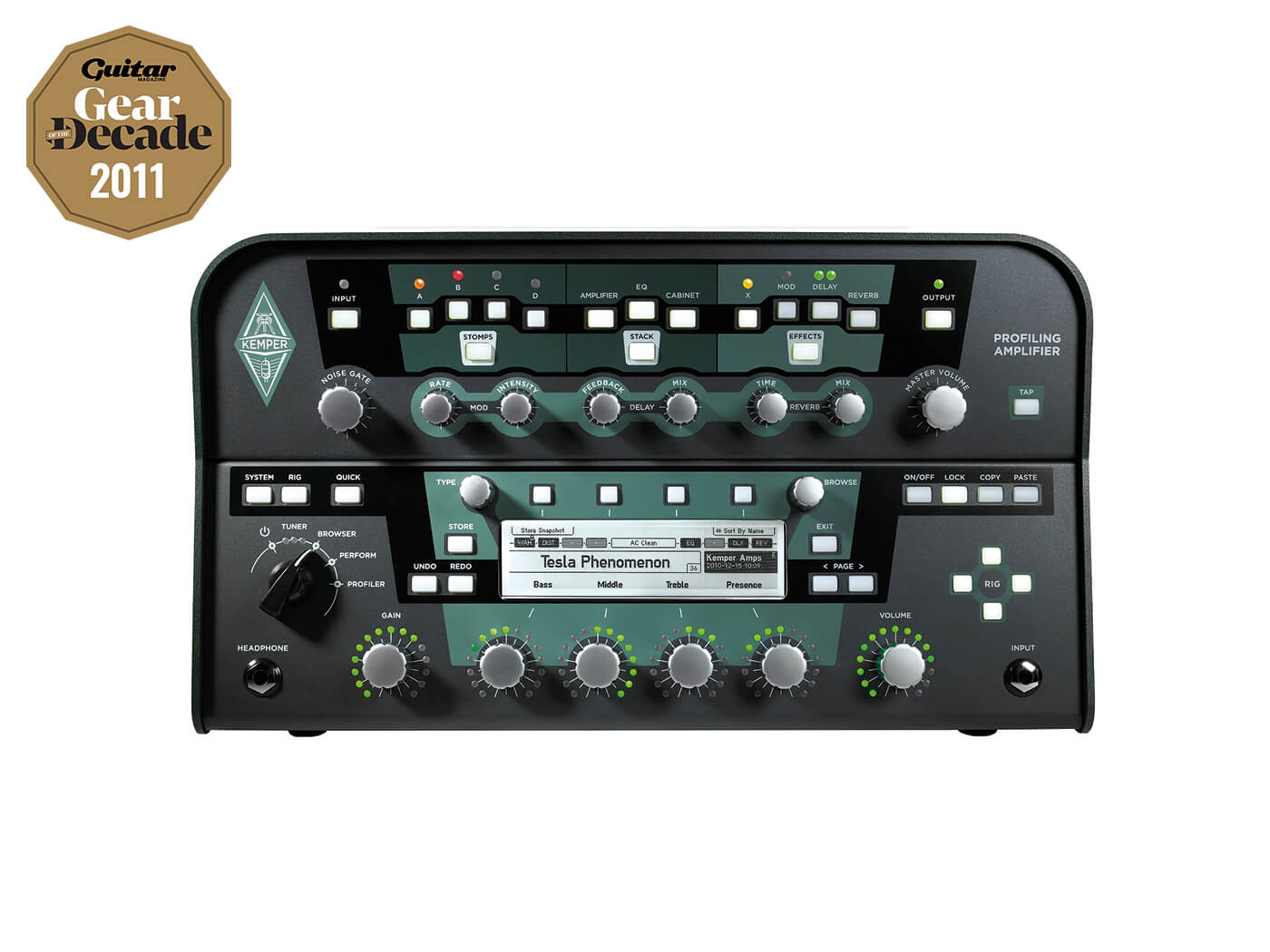
Christoph Kemper’s company had been making the Access Virus synthesiser for 15 years before Kemper’s fascination with distortion would lead to the development of an algorithm that could accurately ‘profile’ the analogue, tube-driven circuits responsible for the most-loved guitar sounds of all time.
When the first review samples arrived in early 2012, I remember standing in a studio with a couple of colleagues and genuinely wondering if this was all some kind of elaborate hoax. Our hilarity at the Twilight Zone noises generated by the profiling process quickly switched to slack-jawed amazement as we AB’d between the mic’d recording of a JTM45 and the profile. Through studio monitors, they were virtually indistinguishable.
Not only did the Kemper Profiler’s release represent the moment that digital amp modelling truly came of age, it turned the process on its head and democratised it, allowing the end-user to create their own amp models.
Suddenly, artists could tour the world with precise snapshots of the analogue tones they used in the studio, with travel costs slashed and a happy sound engineer (insert your own joke here) getting a consistent tone every night. Producers could fly into a session with a library of classic amplifiers in their carry-on luggage. And – via innumerable profiles available online – any Kemper owner now had access to a virtual amplifier collection beyond their wildest dreams. Plenty of products claim to be revolutionary, this was the real thing.
Yamaha THR (2011)
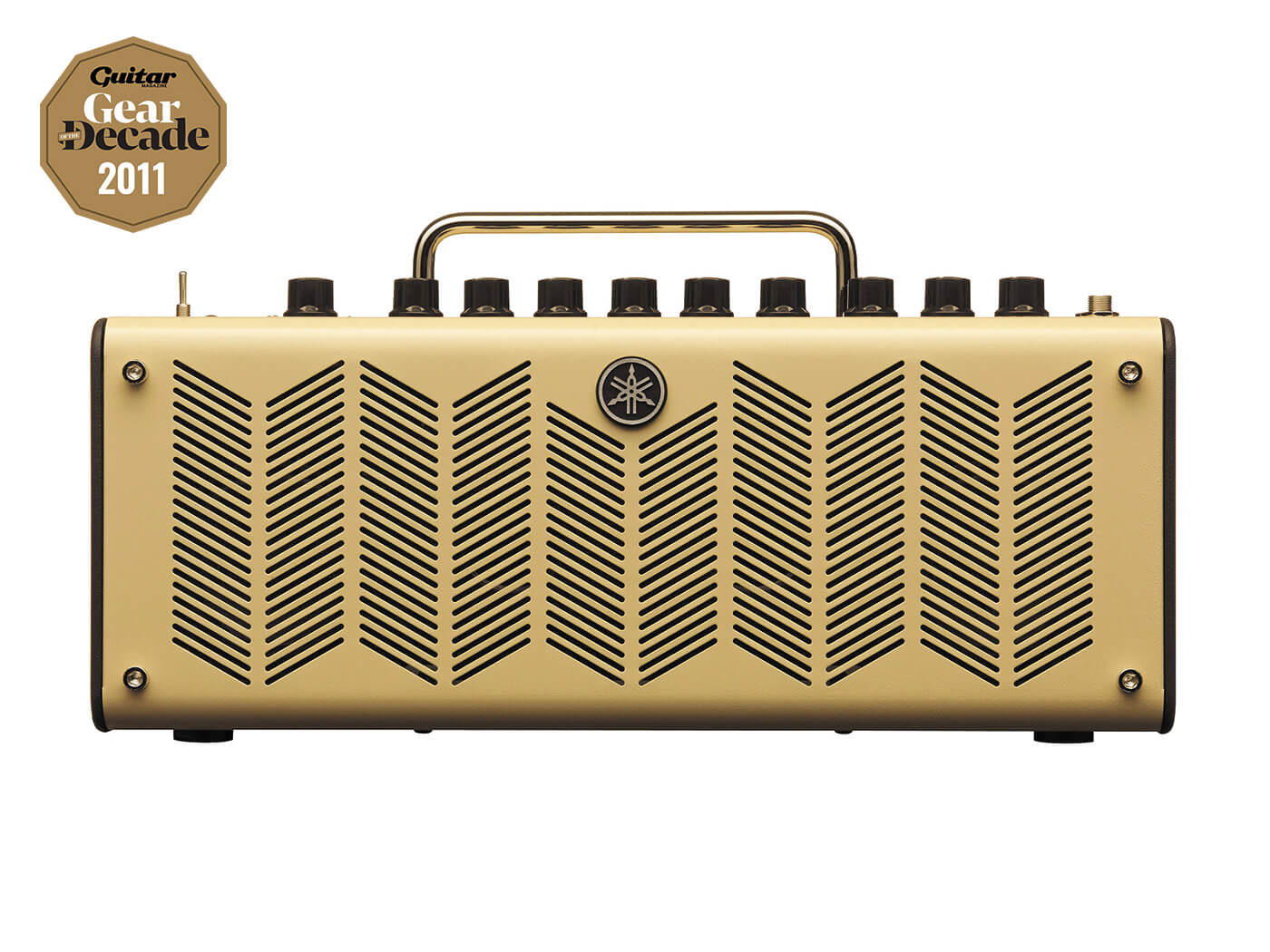
The key to serious paydirt in product design is to create something that nobody realises they need and make it seem indispensable. On arrival, the THR’s ‘third amp’ concept dovetailed perfectly with modern living – made to sit elegantly on a desk or shelf and be no more obtrusive than a DAB radio or bluetooth speaker, the battery or mains-powered THR10 and THR5 models delivered rich and surprisingly three-dimensional tones from compact enclosures. And although they were conceived with the living room in mind, we’ve even seen people gig them.
The THR’s simplicity belied its deep-editing and USB audio capabilities but as the decade wore on, the act of hooking an amplifier up to a computer in order to edit parameters or even using a guitar cable when playing at home began to feel a little… tired. First-world problems, indeed.
Happily, 2019 saw Yamaha reboot THR with new MKII versions equipped with Bluetooth for audio playback and mobile editing, and a built-in wireless receiver designed to work with the Line 6 G10T transmitter. But before you slip into the warm embrace of muscle atrophy, note that the outdoor potential of THR-II is further enhanced by ditching AAs in favour of a rechargeable lithium-ion battery with up to five hours of use from one charge. A design for life, refined.
TC Electronic Ditto Looper (2013)
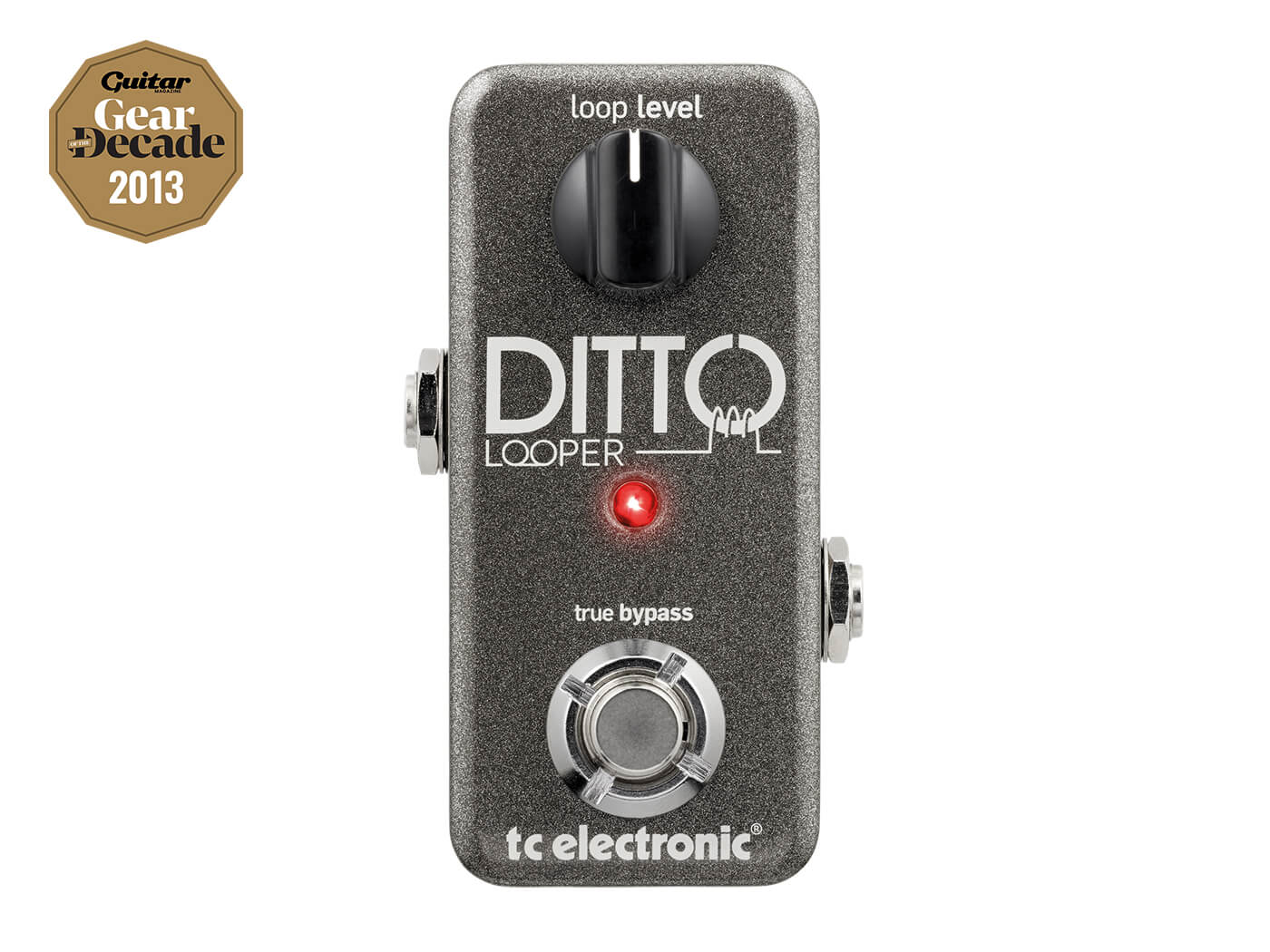
Les Paul and a Marshall? Telecaster and an AC30? Nope. Over the past decade, the combination of an acoustic guitar and a looper has become the go-to live rig for aspiring young songwriters.
While looping diehards crave the near-limitless possibilities of units such as the Boss RC-300, the majority of us just want to lay down a basic percussive rhythm and some chords and noodle over the top – something that makes solo practice and songwriting sessions exponentially more rewarding.
If you fall into the latter camp, the TC Ditto is still a no-brainer purchase today. On its launch in 2013, this decidedly compact unit was a simple and affordable gateway drug into the world of looping that chimed with the trend for space-saving stompboxes. Much like the PolyTune, it soon started to appear on pedalboards everywhere…
Strymon BigSky (2013)

In the world of guitar-effects junkies and sonic explorers, Strymon is king. The Californian brand was born in 2009 when Damage Control discontinued its product line and began building products under the Strymon name. If you’re the type of guitar player who gets most of your tone from your pedalboard, there’s a strong chance that you’re either lusting after a Strymon unit, you already own one, or you own several.
Building on the success of the BlueSky Reverberator, the BigSky arrived in a larger form-factor and its motherlode of ethereal reverbs can be heard all over modern guitar music. If in doubt, flip to the Cloud mode and bathe in the atmospherics for several hours – single notes have never sounded so good. One reverb pedal to rule them all? Almost certainly. The BigSky is the Instagram generation’s DL4.
Blackstar Fly 3 (2014)

Make no bones about it, battery-powered micro amps used to sound rubbish. Fizzy, waspish novelty items that were scarcely better than no amplifier at all… there must be whole islands in the Pacific made from them. Then came the Blackstar Fly, which – despite its name – quickly generated a more desirable kind of buzz.
Pushing three watts out of a three-inch speaker, the Fly really has no right to sound decent, but it does. Undoubtedly the biggest-sounding little amp out there, from clean to mean, the Fly is great for a quick noodle or jamming along with your mate’s acoustic. The tape-style delay effect is a nice addition and 2017’s Bluetooth version added wireless audio playback for soloing over backing tracks or indulging in some casual music listening. And every guitar that comes into the office still gets plugged into a Blackstar Fly first!
Novo Guitars Serus J (2016)
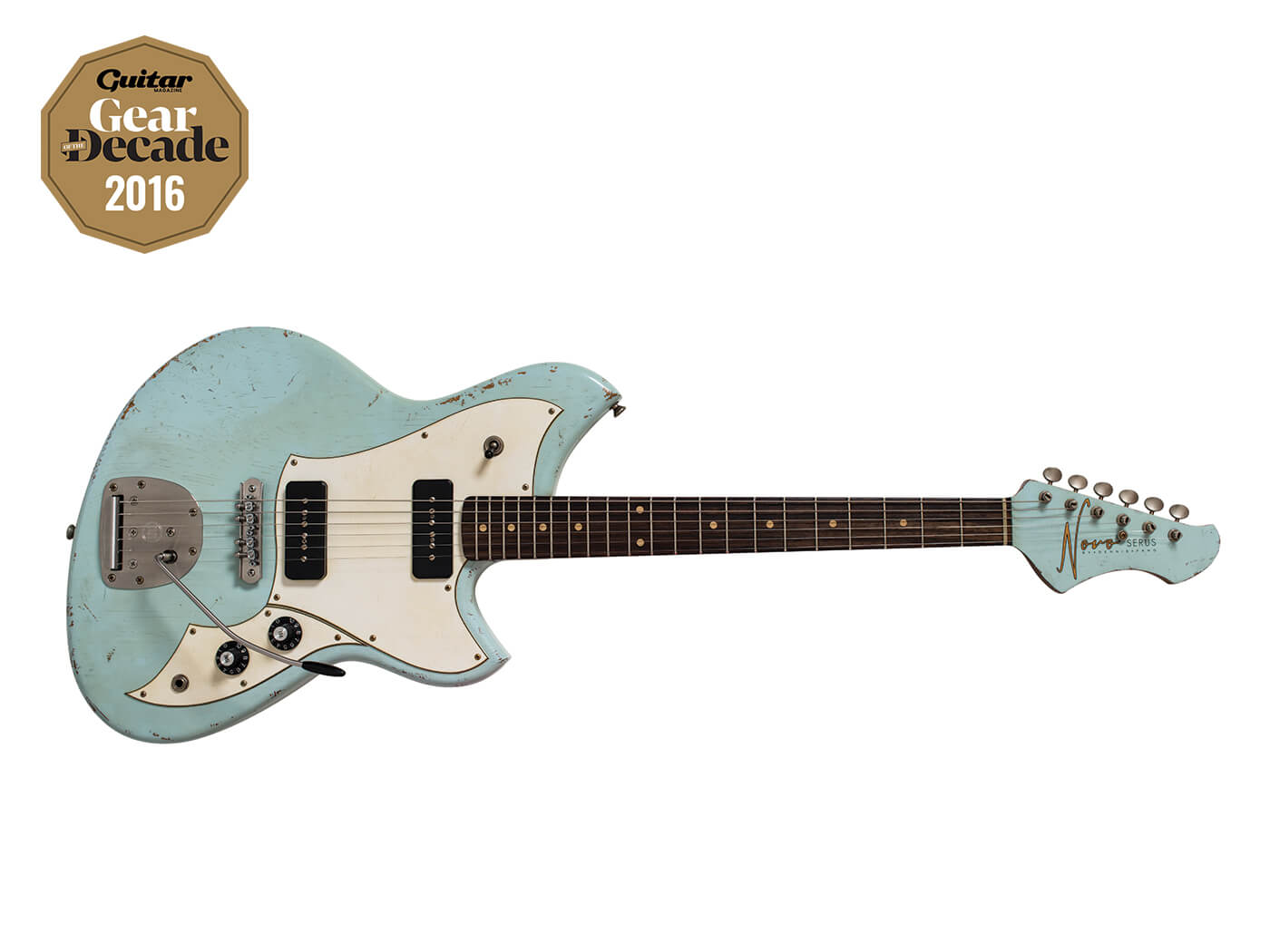
When it comes to retro hybrids with distressed paint jobs, Dennis Fano blazed a trail long before it was fashionable, and his influence can be seen in the workshops of boutique guitar-makers across the world. Launched following his departure from Premier Builders Guild and Fano Guitars, Novo finds Dennis at the peak of his powers, and he and his small Nashville-based team are building some of the best bolt-ons on the planet.
The Novo range is based around one offset body outline, but it incorporates a wide variety of variations and custom options. Frankly, we could have chosen any of the solidbody Serus or thinline Miris models, but the Serus J perhaps best captures the zeitgeist. Even in a market that’s fit to burst, if you are looking for a boutique offset, Novos are as good as it gets – light, supremely resonant and necks to die for.
Universal Audio OX Amp Top Box (2017)

Some of the most successful products of recent times have been endlessly useful problem-solvers, and Universal Audio’s OX is one such example. Speaker attenuation, a reactive dummy load, sophisticated digital cabinet, mic and room emulations, wireless app control… there are many strings to the OX’s bow. But fundamentally, it’s a one-stop shop for guitar recording, practice and performance that allows you to use your preferred tube amp with its sweet spot dialled in, at manageable volumes. And it does all of the above with a finesse and simplicity that never makes the experience of using it feel like homework.
Want to carry on using the amp you love but give the sound engineer a studio-quality feed with a choice of virtual mics, cabinets and outboard effects? Want to record a cranked amp at home and get a pro-studio sound without waking up the neighbours? Just want to play through a valve combo at 4am on headphones? The OX makes all of this possible and more. And following its launch, by the time the next NAMM show came around, dozens of MI companies had OX units on their stands as a product demo solution. We’d call that a ringing endorsement.
Taylor V-Class bracing (2018)

Although the past decade has seen digital guitar technology come of age, it’s reassuring to note that a human armed with a chisel and old-fashioned ingenuity is still capable of making waves. Indeed, waves of both surf and sound informed perhaps the biggest revolution in internal acoustic-guitar architecture since the dawn of X-bracing.
One early morning following a storm, Andy Powers – Taylor Guitars’ master guitar designer and now its third partner alongside co-founders Bob Taylor and Kurt Listug – was watching the surf near his Southern California home. He noticed waves breaking around a stone jetty and dividing into equal parts on either side, and it was at this point that Powers began to sketch the seed of an idea that would light the way out of what he saw as the “design cul-de-sac” of X-bracing.
The implications for projection, sustain and intonation were breathtaking. Not only did V-Class bracing live up to the hype, it fixed many of the issues that can make flat-top acoustics the ‘problem child’ alongside perfectly tuned electronic sounds in a modern recording environment.
In 2019, we found out what happens when the V-Class idea is applied to a 12-string – the answer is quite simply the most in-tune 12 we’ve ever heard. Nobody can say for sure what innovations the next decade will bring to acoustic guitar design and manufacture, but there’s little doubt that Andy Powers will lead the vanguard.
Fender Vintera ’60s Jazzmaster (2019)

Has this been the decade of the Jazzmaster? In the 60 years since its arrival in the Fender catalogue as the top-of-the-line electric guitar, Leo’s much-misunderstood offset-body electric has enjoyed the occasional renaissance. Yet the Instagram era has seen the Jazzmaster reach levels of mainstream acceptance beyond even its time in the sun during the alt-rock explosion of the early 1990s.
During the past decade, Fender offsets have been everywhere, with artists as diverse as Jim Root, Chelsea Wolfe, Troy Van Leeuwen and Sam Fender taking the Jazzmaster way beyond surf tones and spy movies. Prices have been rising steadily on vintage models, too, with ‘Jazzmaster’ consistently proving to be one of Reverb.com’s top search terms.
Fender’s Classic Player model was the company’s biggest-selling Jazzmaster ever, and 2019’s updated Vintera incarnation (pictured above) proved to be the fastest-selling JM of the decade. Looking for an affordable offset with vintage-style appointments? Of course you are. This is it.
What is the best guitar product you’ve bought over the last 10 years? Head to our social media channels @guitar and let us know, or write to editors@guitar.com.
